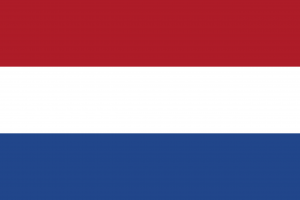Language/Dutch/Culture/History-and-Traditions
 Հայերէն
Հայերէն Български език
Български език 官话
官话 官話
官話 Hrvatski jezik
Hrvatski jezik Český jazyk
Český jazyk English
English Suomen kieli
Suomen kieli Français
Français Deutsch
Deutsch עברית
עברית हिन्दी
हिन्दी Magyar
Magyar Bahasa Indonesia
Bahasa Indonesia فارسی
فارسی Italiano
Italiano 日本語
日本語 Қазақ тілі
Қазақ тілі 한국어
한국어 Lietuvių kalba
Lietuvių kalba Νέα Ελληνικά
Νέα Ελληνικά Şimali Azərbaycanlılar
Şimali Azərbaycanlılar Język polski
Język polski Português
Português Limba Română
Limba Română Русский язык
Русский язык Српски
Српски Español
Español العربية القياسية
العربية القياسية Svenska
Svenska Wikang Tagalog
Wikang Tagalog தமிழ்
தமிழ் ภาษาไทย
ภาษาไทย Türkçe
Türkçe Українська мова
Українська мова Urdu
Urdu Tiếng Việt
Tiếng Việt
| ◀️ Geography and Landmarks — Previous Lesson | Next Lesson — Greetings and Etiquette ▶️ |
Introduction[edit | edit source]
In this lesson, we will explore the rich history and vibrant traditions of the Netherlands. Understanding the history and traditions of a country is essential for gaining a deeper appreciation of its language and culture. By delving into the Netherlands' past and present customs, we can better comprehend the Dutch language and the values that shape its speakers' everyday lives. Throughout this lesson, we will uncover fascinating historical events, unique customs, and traditional practices that have shaped the Netherlands into the country it is today.
Historical Overview[edit | edit source]
The history of the Netherlands is one of resilience, innovation, and cultural diversity. From its origins as a collection of small territories to its transformation into a prosperous and influential nation, the Netherlands has experienced significant historical events that have shaped its identity.
Early History[edit | edit source]
The earliest recorded history of the Netherlands dates back to the Roman era when it was inhabited by various Germanic tribes. In the 16th century, the Netherlands gained independence from Spanish rule, leading to the formation of the Dutch Republic. This period marked the Golden Age of the Netherlands, characterized by economic prosperity, artistic achievements, and scientific advancements.
Colonial Empire[edit | edit source]
During the 17th century, the Netherlands established a vast colonial empire, with territories spanning across the globe. Dutch colonies, such as the Dutch East Indies (present-day Indonesia), Suriname, and the Dutch Antilles, contributed to the nation's wealth and cultural diversity. The influence of the Dutch colonial past can still be seen in the country's cuisine, language, and customs.
World Wars and Modern Era[edit | edit source]
The Netherlands played a significant role in both World War I and World War II. The country remained neutral during the First World War but was occupied by German forces during the Second World War. The Dutch resistance movement and the devastating impact of the war led to a period of rebuilding and reflection. Today, the Netherlands is known for its commitment to peace, international cooperation, and progressive social policies.
Cultural Traditions[edit | edit source]
The Netherlands is renowned for its vibrant cultural traditions, which reflect the country's history, values, and diverse regional identities. From traditional festivals to unique customs, Dutch culture offers a captivating glimpse into the everyday lives of its people.
Sinterklaas[edit | edit source]
One of the most beloved Dutch traditions is Sinterklaas, a festive celebration that takes place on December 5th. Sinterklaas, accompanied by his helpers known as "Zwarte Pieten," visits Dutch households to deliver gifts to children who have been good throughout the year. The celebration includes parades, songs, and the exchange of small presents.
King's Day[edit | edit source]
King's Day, or Koningsdag, is a national holiday in the Netherlands, celebrated on April 27th. This vibrant event marks the birthday of the reigning monarch and showcases the Dutch spirit of unity and celebration. Streets and canals come alive with orange decorations, flea markets, live music, and various outdoor activities.
Windmills[edit | edit source]
Windmills are an iconic symbol of the Netherlands and are deeply ingrained in Dutch culture and history. These traditional structures were historically used for a variety of purposes, including milling grain, pumping water, and sawing timber. Today, windmills serve as tourist attractions and reminders of the country's innovative engineering and sustainable practices.
Exercises[edit | edit source]
Now, let's put your knowledge to the test with some exercises!
1. Match the following Dutch traditions with their descriptions:
a. Sinterklaas b. King's Day c. Windmills
i. A festive celebration on December 5th, where gifts are delivered to children. ii. A national holiday celebrated on April 27th, honoring the reigning monarch. iii. Iconic structures that represent Dutch innovation and sustainability.
Solution: a - i b - ii c - iii
2. Fill in the blanks with the appropriate historical events:
a. The Netherlands gained independence from _________ rule in the 16th century. b. The Dutch colonial empire included territories such as _________ and the Dutch Antilles. c. The Netherlands was occupied by _________ forces during World War II.
Solution: a - Spanish b - the Dutch East Indies (present-day Indonesia) c - German
Conclusion[edit | edit source]
By exploring the history and traditions of the Netherlands, we have gained a deeper understanding of the country's language, culture, and values. From its early beginnings to its modern-day customs, the Netherlands offers a unique and enriching experience. So, continue your journey of learning the Dutch language and immerse yourself in the rich tapestry of Dutch culture. Tot ziens!
Sources[edit | edit source]
Other Lessons[edit | edit source]
- Geography and Landmarks
- Holidays and Celebrations
- Netherlands Timeline
- Education
- Caribbean Netherlands Timeline
- Sint Maarten Timeline
- Greetings and Etiquette
| ◀️ Geography and Landmarks — Previous Lesson | Next Lesson — Greetings and Etiquette ▶️ |

